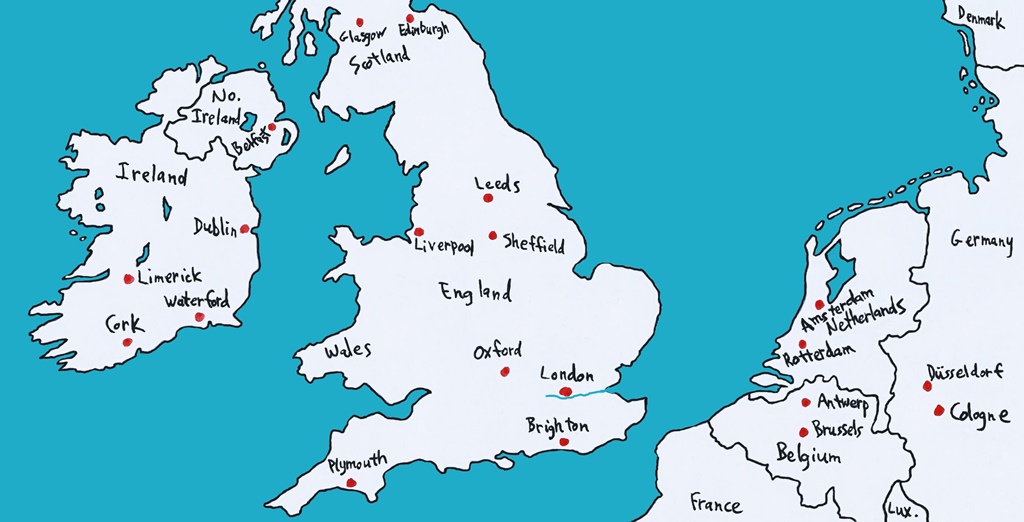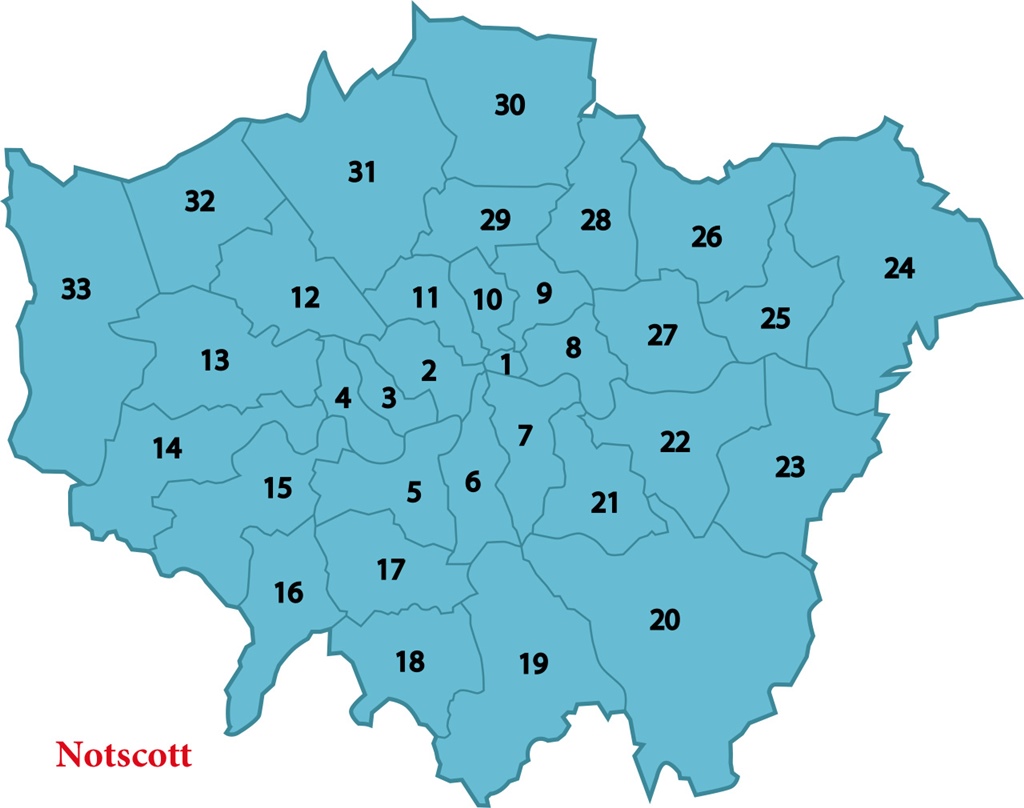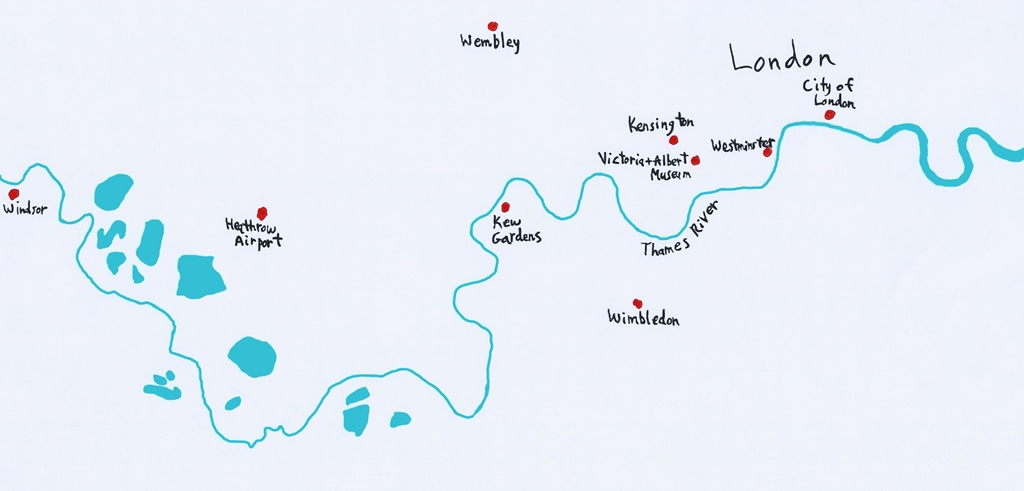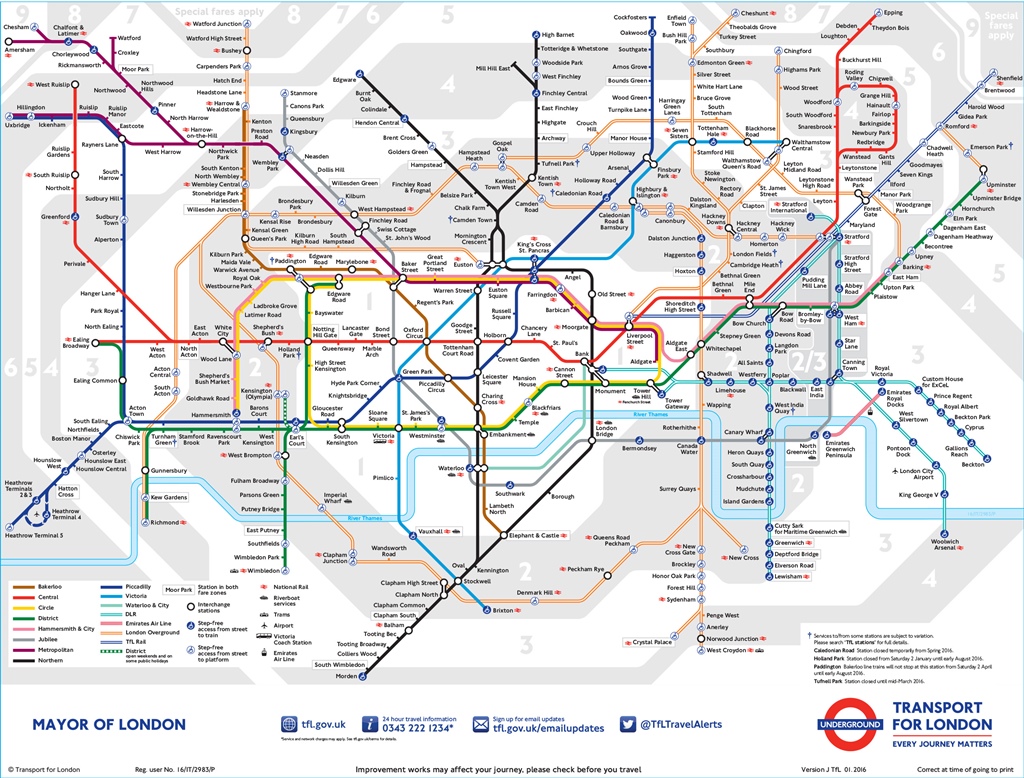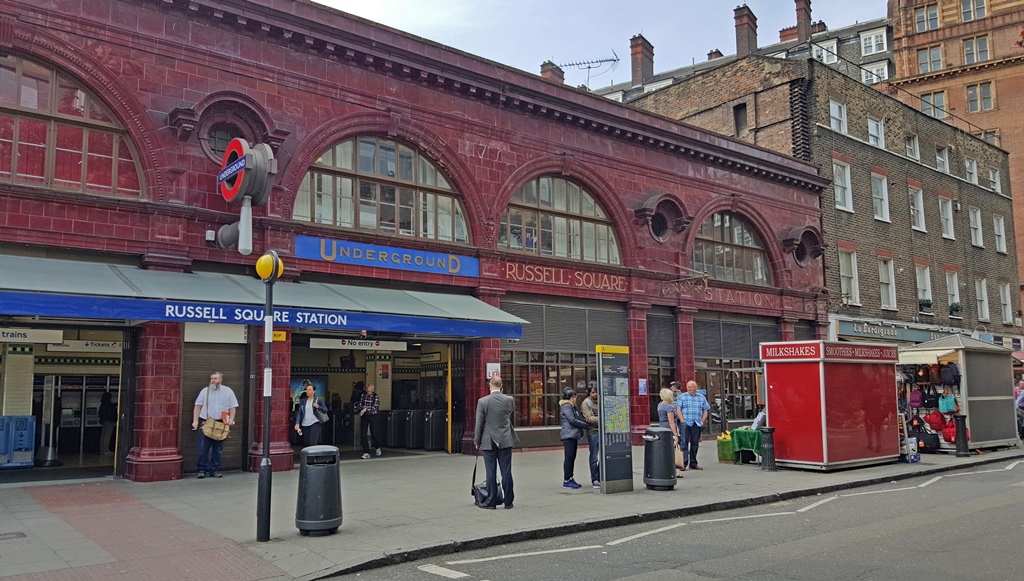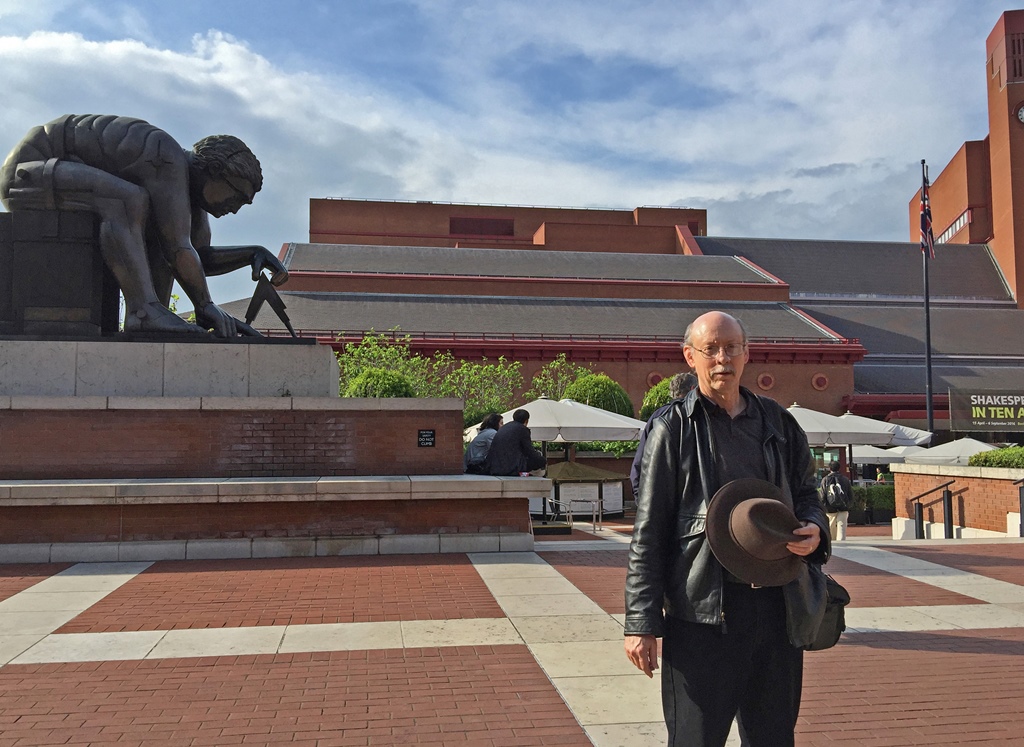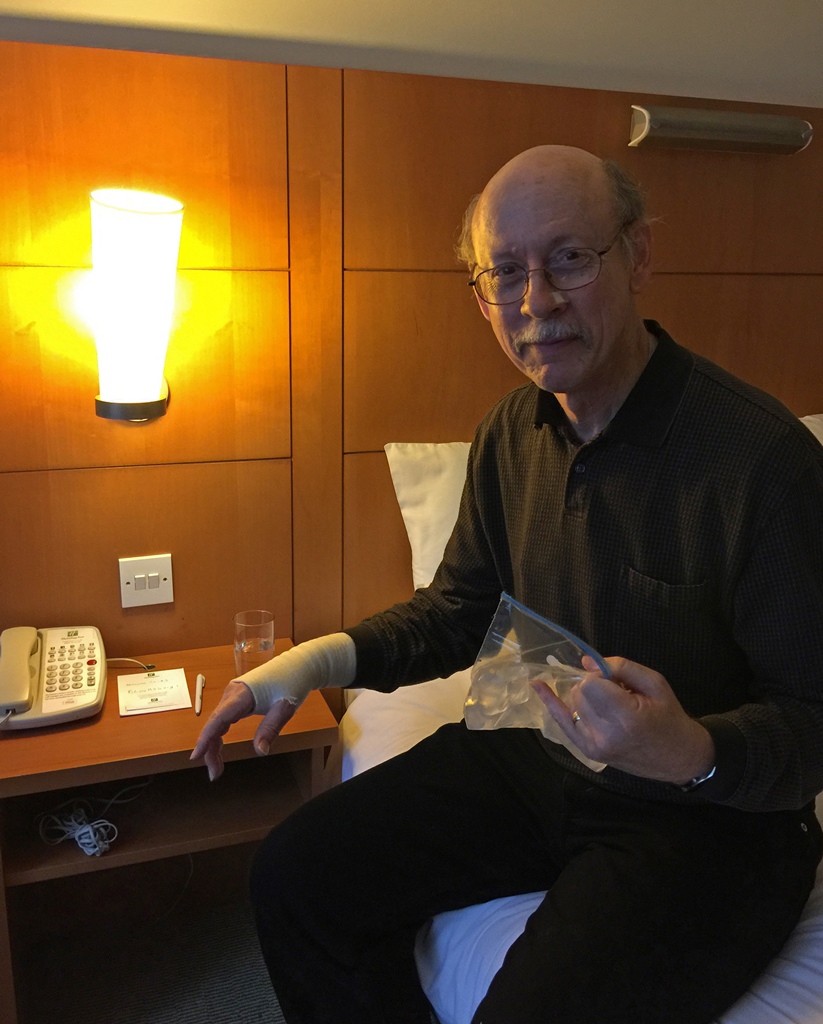Great Britain and Vicinity
You've probably been wondering when we were going to get around to visiting London. After
all, as recently as 2018, London was the most-visited city in Europe. We didn't visit
London in 2018. But we did go there in 2016, and I'm finally getting around to writing
about it, so your wait is over. On the other hand, maybe you've heard enough about London
from other sources (it's not like no one ever writes about it), and already know
everything you’ll ever want to know about this old-world capital city. Stay tuned, and
maybe you'll be surprised! (No promises though.)
London, of course, is the capital of England and of the United Kingdom. With a municipal
population of more than 9 million, it's by far the largest city in the European Union (as
of this moment; should Brexit succeed, this title would move over to Berlin, with less
than 4 million). Like the rest of the UK, London's currency is based on the Pound
Sterling. Once upon a time, the Pound Sterling's value was based on the value of a pound
of sterling silver (an alloy containing 92.5% pure silver). These days a British Pound
hovers around $1.28 US, a whole lot less than a pound of silver (currently around $18 per
ounce). Since 1971, there have been 100 British pennies to a British pound, though for
some reason multiple pennies are called "pence" (abbreviated as the letter "p") instead
of "pennies". Before 1971, money was much more complicated. There were pounds, but then
there were shillings (20 per pound), pennies or pence (abbreviated "d" for reasons
unknown, 12 per shilling), farthings (one-quarter of a penny), ha'pennies (half of a
penny), threepence and sixpence coins, florins (2 shillings), crowns (5 shillings) and
half-crowns (2 shillings sixpence). And this was before portable calculators!
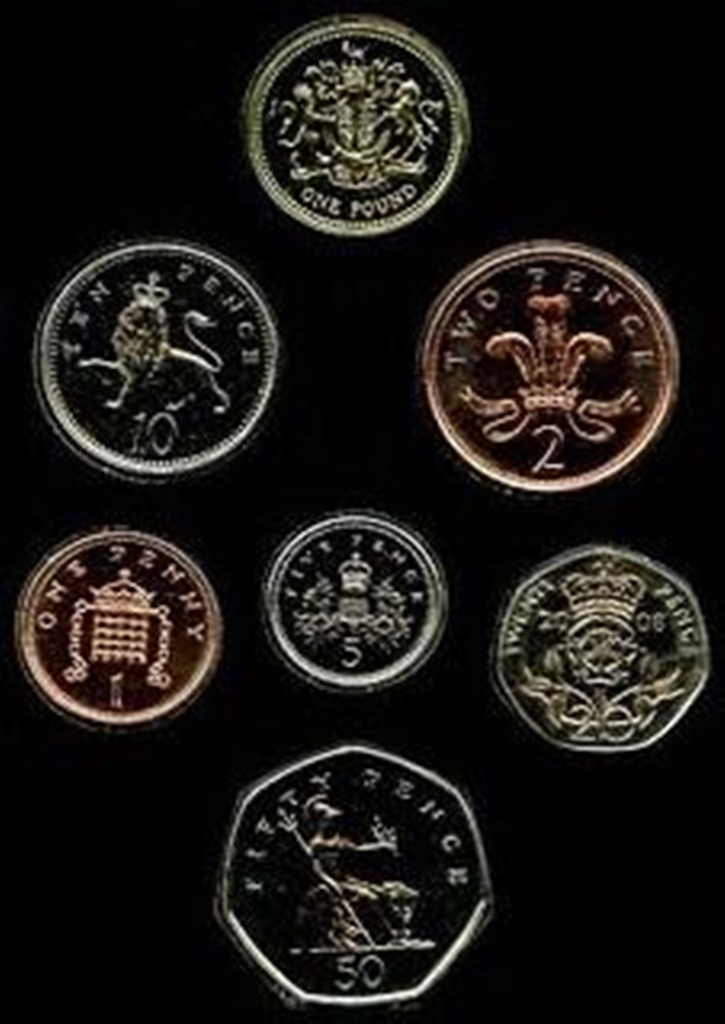
British Coins (current)
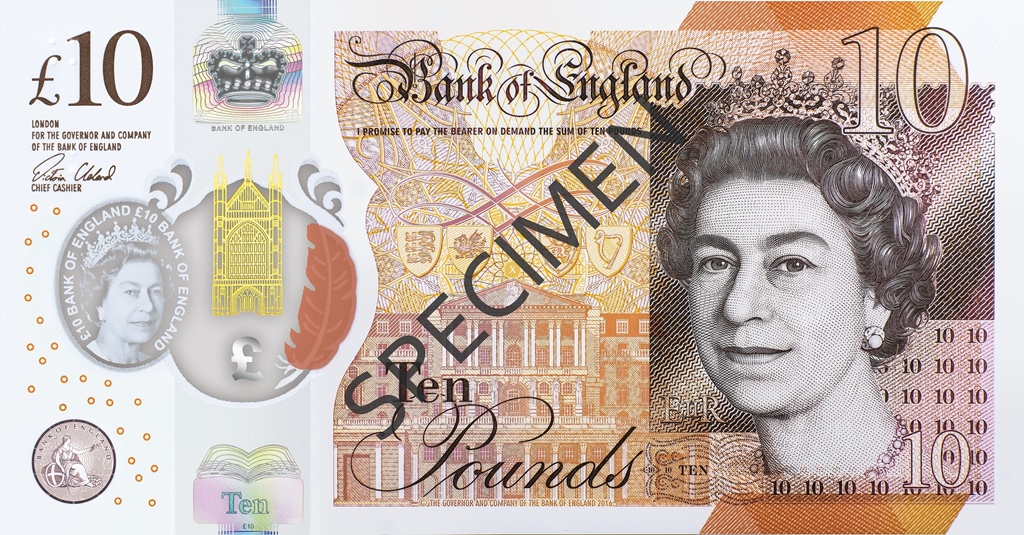
Ten-Pound Note
Greater London (a specific area containing the London region) is split up into 32 districts
called boroughs. Actually there are 33, but one, located in the middle of everything
at the north end of London and Southwark bridges, is called the "City of London" and is not
considered to be a borough for some reason. The borough containing the Houses of Parliament
is called the "City of Westminster" (while still being a borough), but none of the other
boroughs are considered to be cities. The special treatment of the City of London might
have something to do with its historical significance. This is where everything started.
London Boroughs
The Romans first settled in the area of the present-day City of London shortly before
50 A.D. While many Roman settlements were accomplished by taking established
settlements away from the ancient Britons who already lived in them, the Romans appear
to have been the first people to have settled in the City of London area. The Romans
called their settlement Londinium (it's not clear where this name came from)
and referred to the river on which it was located as the Tamesis (from a
Brittonic Celtic name for the river). Over the centuries, the name of the city went
through several variations before ending up as London, and of course the river ended
up being the Thames (pronounced Tim's). The initial settlement was burned
down around 61 A.D. during an uprising by the Iceni tribe, led by Queen
Boadicea. But the Romans weren't put off for long, rebuilding the town bigger and
better, and eventually establishing it as the capital of the province of
Britannia in 100 A.D.
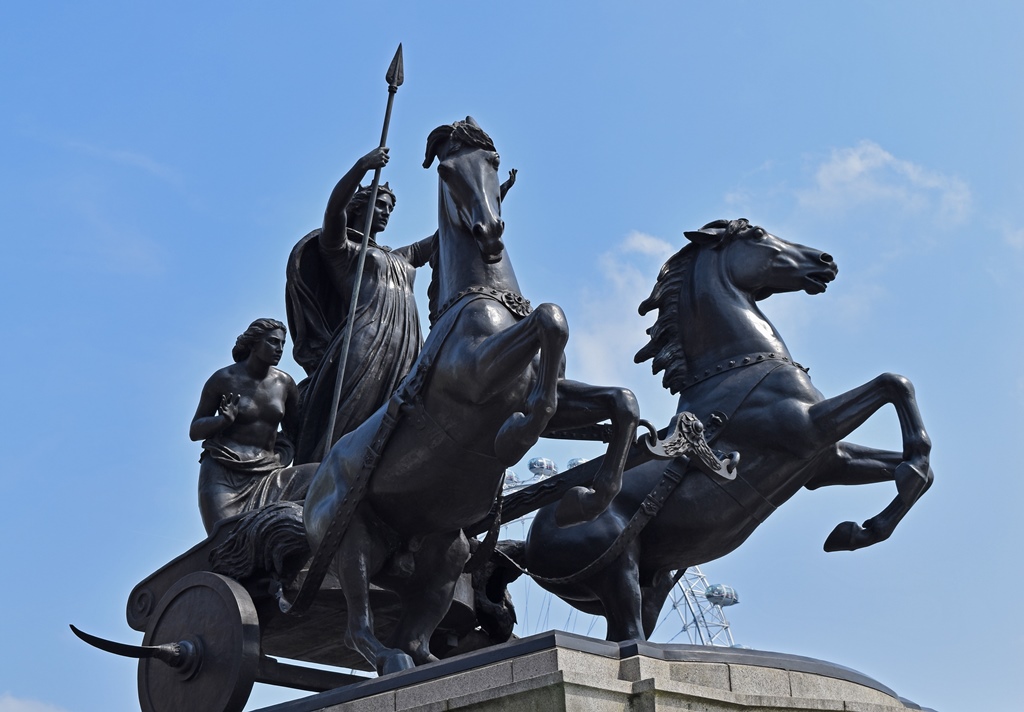
Boadicea and Her Daughters, Thomas Thornycroft (1856-83)
When the Roman Empire fell, so did Londinium, which was abandoned for a time in the 5th
Century. But Anglo-Saxons (from Germanic tribes that migrated from the continent) soon
moved into the area and eventually reestablished the city as a major port. The city has
been continuously occupied since then and has had many ups and downs over the centuries
(Vikings, Normans, civil wars, plagues, fires, etc.). The history of London is long and
exhaustively documented, with actions ranging from the inspirational to the reprehensible,
and I really have no choice but to ignore most of it. But as usual, I will bring up some
things when they relate to the activities undertaken by us during our visit, and I hope
you find them interesting.
Our first activity was getting to London from Southern California. This ended up being
less complicated than the starts to many of our trips, as we were able to find a
reasonably-priced United Airlines nonstop from Los Angeles International Airport to
London's Heathrow Airport. Again, our children (who, we our forced to acknowledge, are
really looking and behaving like adults these days) were otherwise occupied, so Nella and
I would only have each other to take pictures of (and of course all that scenery).
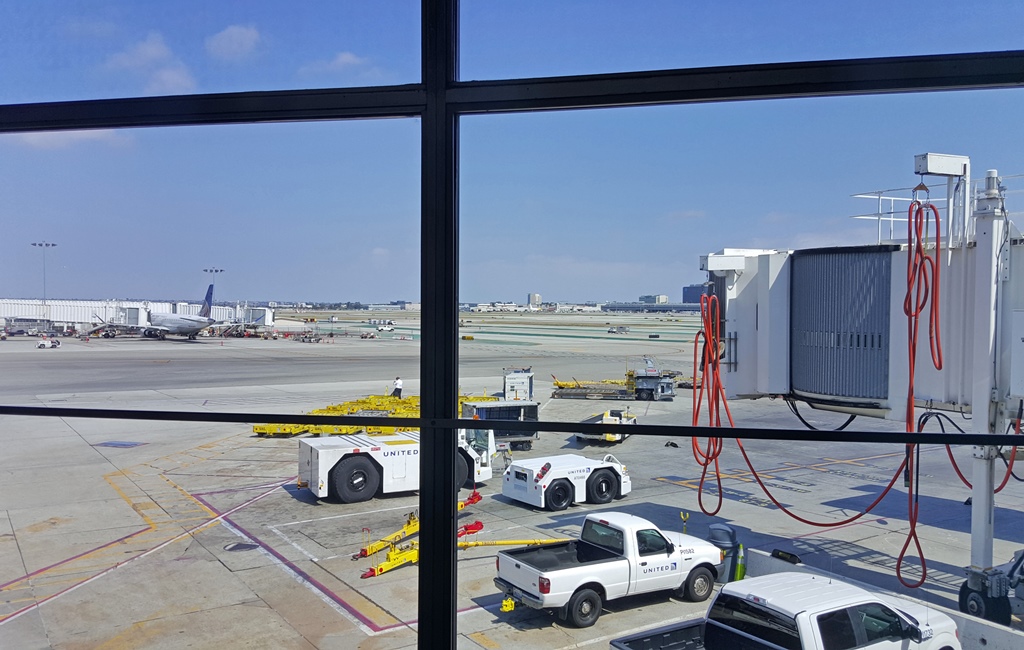
Los Angeles International Airport
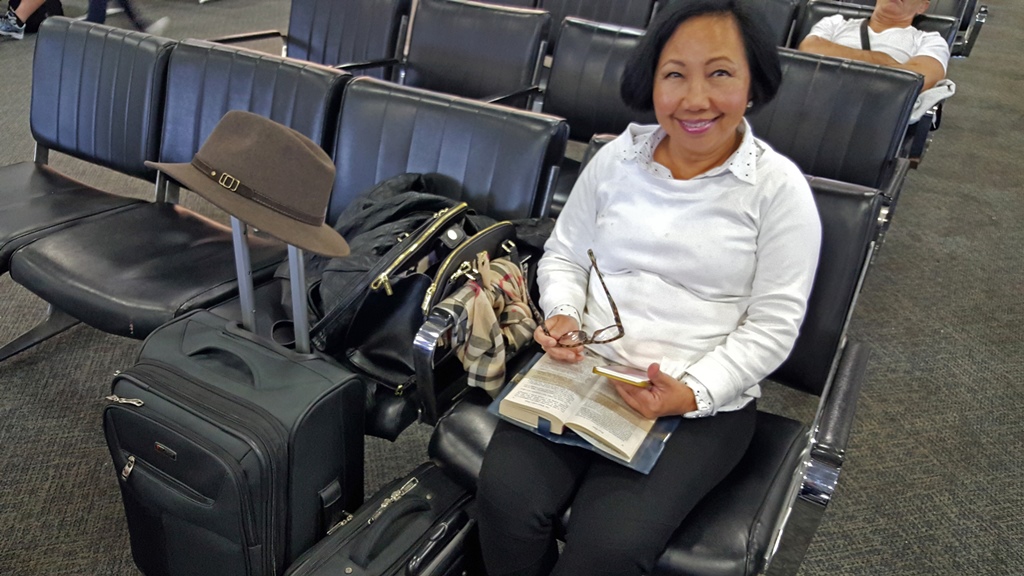
Nella with Carry-On Luggage
The nice thing about a nonstop flight to London from L.A. is that you don't have to
kill time at any intermediate destinations. The less-nice thing is that you have to
sit on the same droning airplane for eleven and a half hours. Fortunately most
transatlantic airlines have pretty big movie libraries for passengers to select from,
so you can catch up on any semi-recent edited-for-airplane movies you haven't seen.
Or you can sleep, if you're able. We did some of both.
After going through immigration and customs, we were faced with the question of how
to get from Heathrow to our hotel, a distance of just under 20 miles.
Heathrow to London
This is when we started to learn that, generally speaking, London is a pricier place
than some other European destinations. A taxi fare would have cost us something like
70 pounds (about $100 in U.S. money). An Uber would undoubtedly have been somewhat
cheaper, but we weren't yet users of Uber at the time. But we ended up selecting an
option that was cheaper than either of these choices. We took the London Underground.
London Underground Plan
The London Underground is London's subway system. Many cities have subway systems,
but London's system, commonly known as The Tube, is the oldest, having its origins way
back in 1863. The system has become quite extensive over the years, with 270 stations
serving all but six of the London boroughs. There are eleven lines, each of which has
a name and a color code used on maps of the system. One line, the Piccadilly line
(dark blue), has three stations at Heathrow (at different terminal buildings) and
passes through central London (including Piccadilly Circus, as you might have
suspected from the name).
This line also has a station within a couple of blocks of our hotel, which meant that
we would not have to worry about transferring between trains with all of our luggage.
It's possible to purchase tickets for individual rides, but it's simpler and more
cost-effective to get something called an Oyster Card, on which you can "load" fare
money and with which you can pay for your trips by waving the card at turnstile
sensors. We found a ticket office at Heathrow at which we acquired Oyster Cards and
had them loaded with enough cash to get us to our hotel (about 5 pounds apiece) and
take a few more trips, all for much less money than a taxi ride (and probably an Uber).
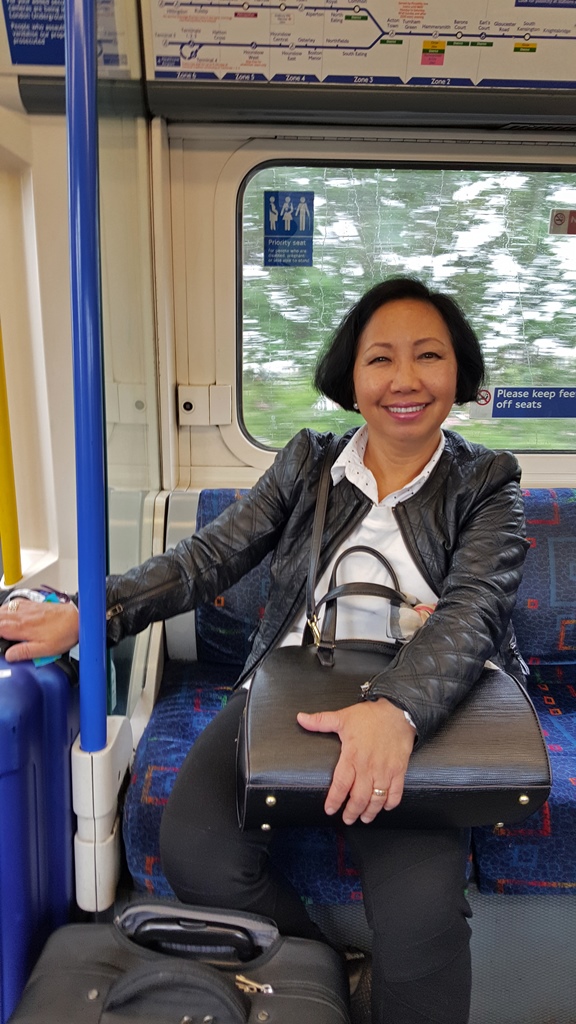
Nella on The Tube
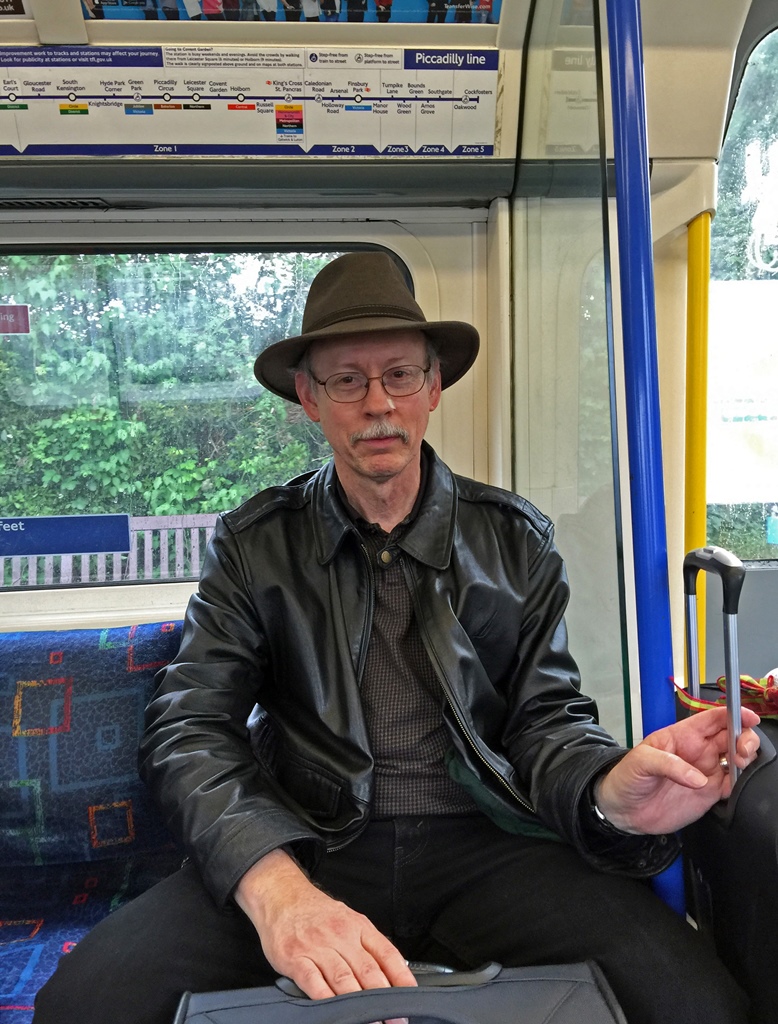
Bob Managing Luggage
Our hotel, the Holiday Inn London – Bloomsbury, was located in the borough of Camden
and was a short distance from the Piccadilly line's deep-underground Russell Square
station. A sign in the station informed us that there were 175 steps to be taken to
get from the train platform to street level, and recommended that we take an elevator
(or "lift" – there were three). We accepted this sound advice, then exited the
station and took the short walk to our hotel.
Russell Square Underground Station
We didn't stay in the hotel room for long, as we hadn't eaten lunch yet, so we
went out and found some at a restaurant in a nearby shopping mall called The
Brunswick Centre. After eating, we walked around the mall, checking out the
shops. Then I had an incident. Earlier, when we'd been on the Underground
(which isn't really all underground), we'd noticed that a rain shower was
starting. And when we'd exited the elevator at the station, we'd found it to be
raining both cats and dogs outside. We waited a few minutes before leaving the
station, and in this time the rain pretty much subsided. After lunch, we were
walking down a short stairway with some oddly-arranged steps, and I stumbled a
little. I tried to catch my footing, but the stairs were still wet and slippery
from the rain and I went down heavily (and impressively, judging from the gasps
of the passersby). People were concerned and seemed pleased that I hadn't
killed myself, and someone pointed out where the nearest hospital was. I
suspected there would be some bruises later, but most of the damage seemed to be
in my right wrist, which was in some pain. But there was nothing visibly wrong,
and everything seemed to function all right, so I figured it was probably a
sprain. I decided a hospital wasn't really necessary, but we went to a pharmacy
we'd seen in the mall to look for something to immobilize the wrist. The people
at the pharmacy were quite helpful – they found an elastic sleeve sort of thing,
cut a hole in it for my thumb to poke through, and charged us a couple of
pounds. I ended up wearing the thing off and on for the next week or so -
you'll be seeing it in the pictures.
Undeterred by my injury, we resolved to do something touristy as it was still
only about 4 P.M. Nothing too ambitious, though – we decided to visit the
British Library, which was only one stop away on the Underground. This stop was
the King's Cross/St. Pancras station. On exiting the station, we were
confronted by a gigantic brick building which could not be ignored. This was
the St. Pancras (not pancreas) railway station (as opposed to the underground
station), a major station from which Eurostar trains depart for the Channel
Tunnel to reach the European mainland. The building was first opened in 1868,
and within five years was modified to include a hotel (now the St. Pancras
Renaissance London Hotel).
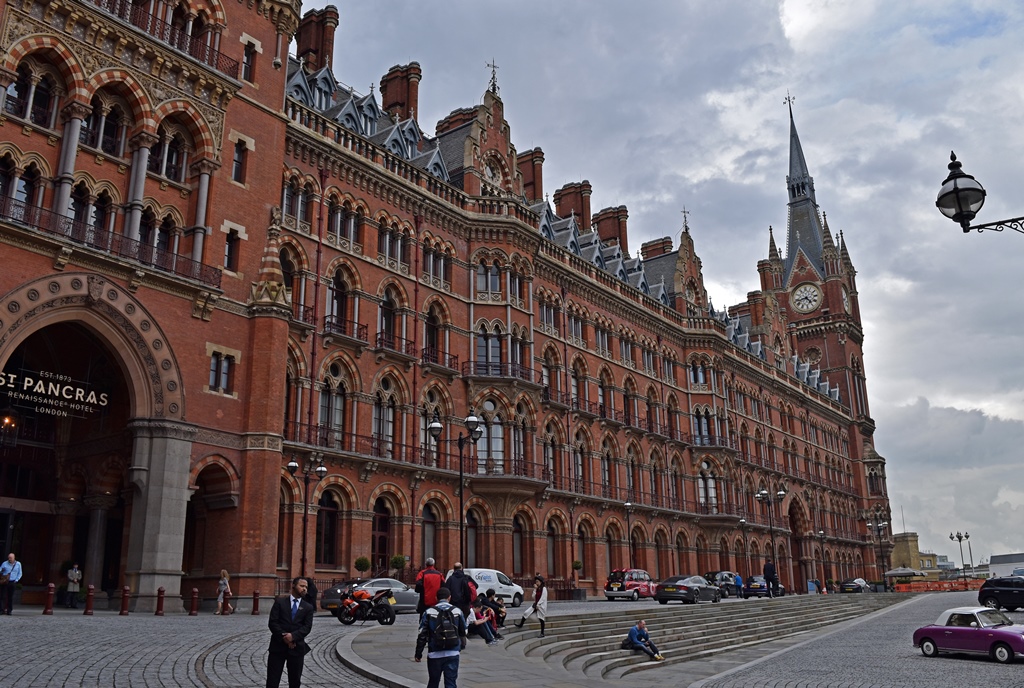
St. Pancras Railway Station
The British Library is the largest national library in the world, ranked by
number of catalogued items (something like 200 million). It was once part of the
British Museum, but was separated in 1972 and has been in its own building since
1998. It's obviously a major research library, but there is also a gallery in
which many items of general interest are on display. These include early
editions of works by authors like Geoffrey Chaucer, Jane Austen, Charlotte Brontë,
Rudyard Kipling, and Charles Dickens, as well as a Gutenberg Bible, Captain Cook's
journal, a manuscript copy of Beowulf, the original manuscript of Handel's
Messiah, hand-written lyrics by John Lennon and Paul McCartney, and a 1215
copy of the Magna Carta. And many more items, none of which visitors are allowed
to photograph (the pictures below are public domain). But the building itself is
kind of interesting, and there is a bronze statue called NEWTON by Eduardo
Paolozzi (1995).
Bob with NEWTON, British Library
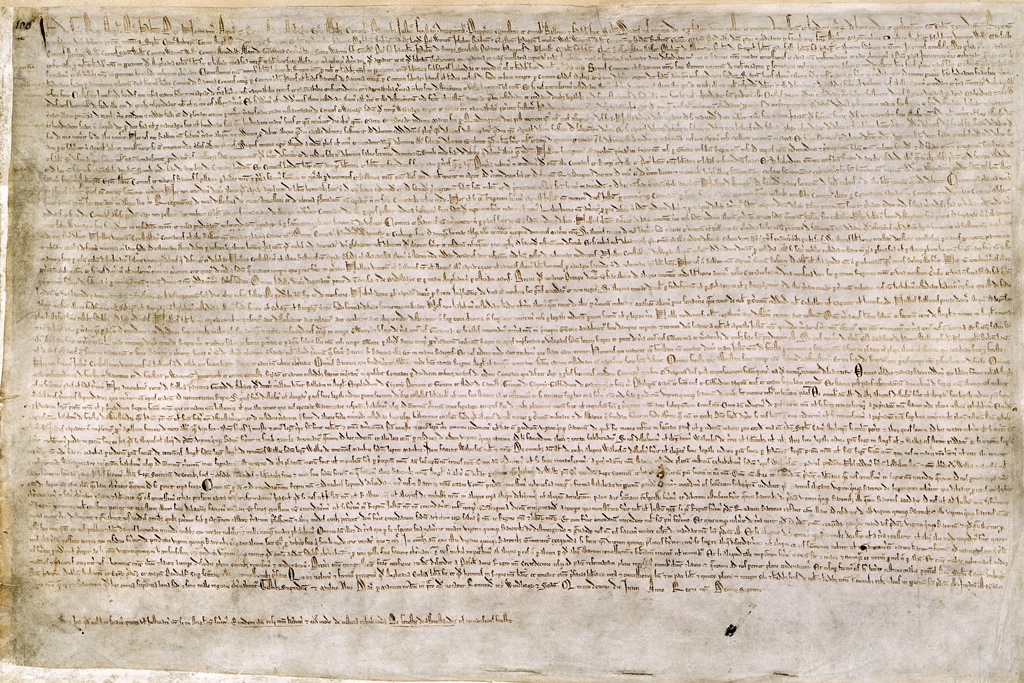
Magna Carta (1215)
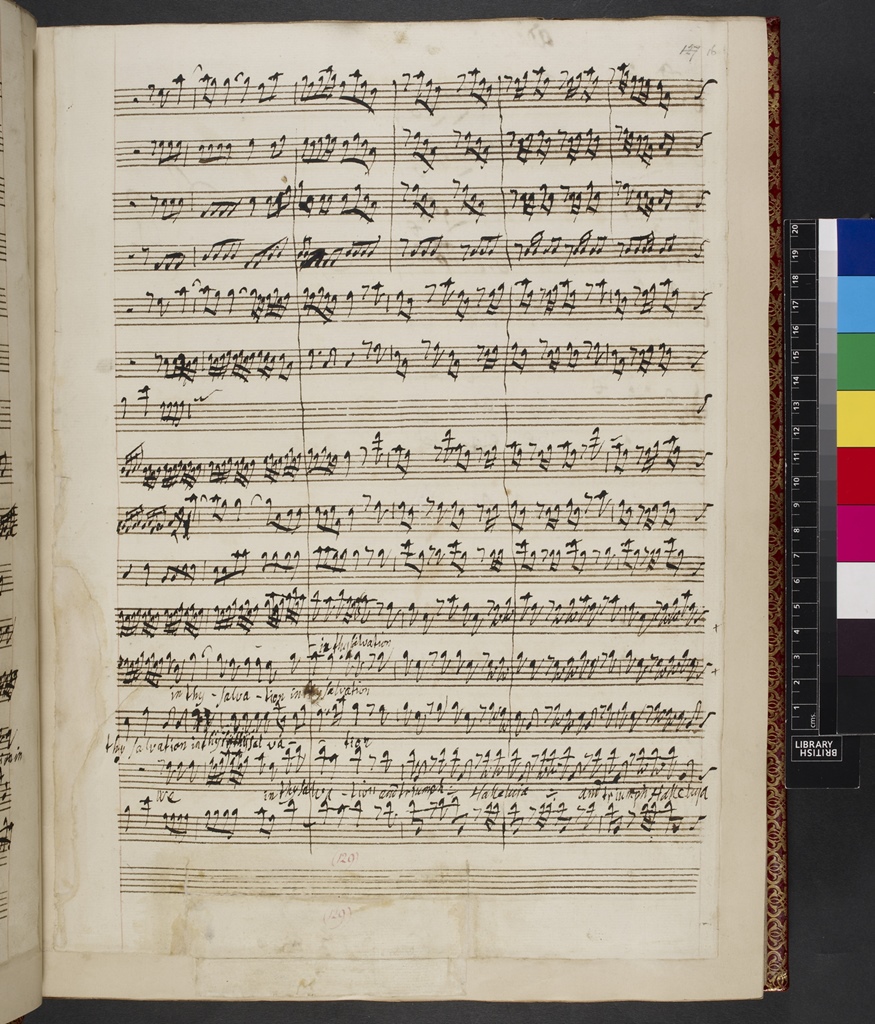
Handel Manuscript Page - The King Shall Rejoice
We returned to the hotel, where I procured some ice to apply to my wrist. It turns
out ice machines for use by guests aren't really a thing in Britain (or at least at
this Holiday Inn), but we were able to get a small bag of ice from a bar off the lobby.
Bob Preparing to Ice Wrist
Having had enough excitement for one day, we retired and tried to get some sleep.
We already had ambitious plans for the next day. First up: a ride on the London
Eye.

